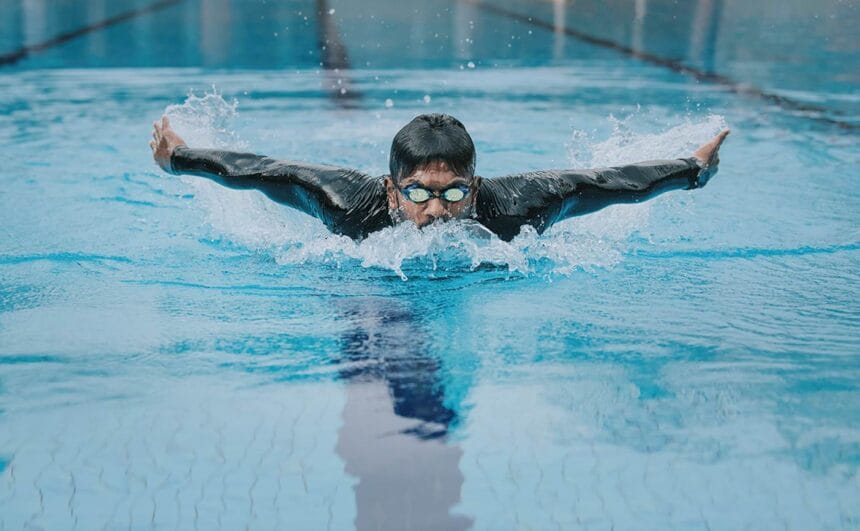Pools are a place for exercise, fun, and relaxation, but the chemicals used to keep them clean can pose hidden risks to lung health. Most swimmers think of skin irritation or red eyes, yet the air just above the water can carry irritants that affect the respiratory system. Chlorine and other common disinfectants react with organic matter like sweat and urine to form compounds that become airborne, potentially impacting both casual swimmers and frequent pool users.
Chlorine and Byproducts in the Air
Chlorine is the most widely used disinfectant in pool maintenance because it effectively kills bacteria, viruses, and algae. When chlorine combines with organic materials in the water, it forms chloramines. Unlike chlorine dissolved in water, chloramines can escape into the air, especially near the pool surface where people breathe.
These compounds are associated with respiratory irritation. Coughing, throat tightness, and wheezing are common among those exposed to high levels. Indoor pools are particularly risky because poor ventilation allows chloramines to accumulate, increasing the likelihood of lung irritation. Long-term exposure has been linked to asthma-like symptoms in competitive swimmers, pool staff, and frequent recreational users.
Children and Sensitive Populations
Children are particularly vulnerable because their lungs are still developing and they inhale more air per body weight than adults. Studies have shown correlations between frequent swimming in chlorinated pools and the onset of asthma in children. People with asthma or chronic obstructive pulmonary disease (COPD) may experience flare-ups even at lower exposure levels.
Ventilation and Pool Management
Indoor pool design plays a critical role in air quality. Proper ventilation removes chloramine-laden air and replaces it with fresh air, reducing exposure. Balanced water chemistry, showering before entering, and controlling the number of swimmers also help limit the formation of harmful compounds. Regular inspections of ventilation systems and staff education on early symptoms of chemical exposure are essential for safe operation.
Alternative Sanitizing Methods
Emerging technologies such as ozone, ultraviolet systems, and advanced oxidation processes can reduce reliance on chlorine, lowering the formation of chloramines. These systems often require higher initial investment but can improve both air and water quality. Maintenance of pool circulation equipment is also important. Routine PVC ball valve replacement, for example, ensures consistent water flow and prevents chemical buildup that can lead to increased airborne irritants.
Practical Measures for Swimmers
Swimmers can take steps to protect their lungs. Showering before entering the pool reduces organic matter that reacts with chlorine. Taking breaks from the water allows the lungs to recover from exposure to airborne chloramines. Parents should select facilities with visible ventilation systems and fresh air circulation. Athletes and frequent swimmers may benefit from medical monitoring and preventive measures, especially if they have pre-existing respiratory conditions.
Chemical treatment is necessary to protect swimmers from waterborne pathogens, but respiratory risks must be addressed. Effective ventilation, careful chemical management, alternative sanitizing technologies, and swimmer awareness all help minimize these risks. Recognizing the invisible threats in pool air ensures a safer swimming environment while maintaining the benefits of aquatic activity. Look over the infographic below to learn more.










